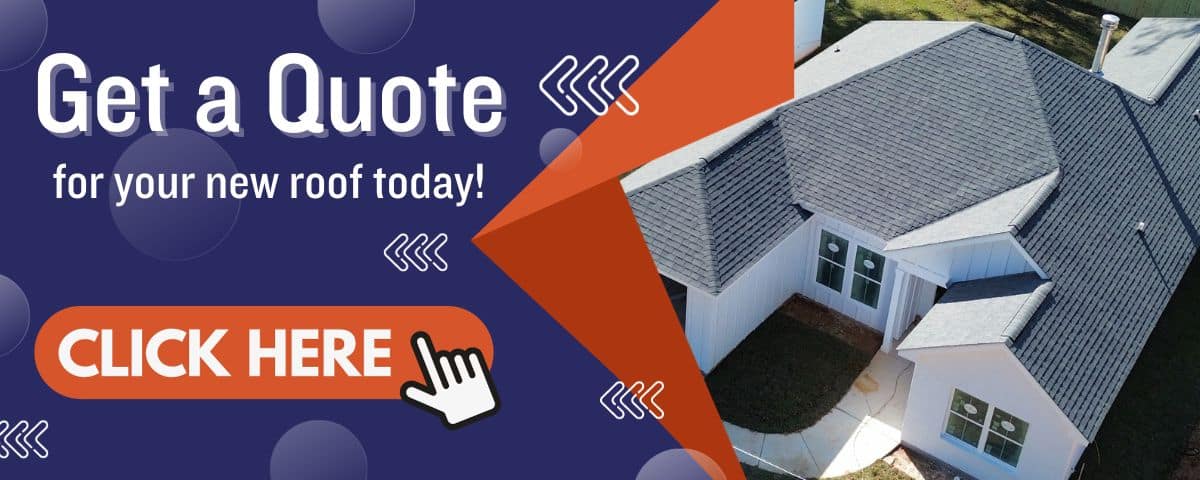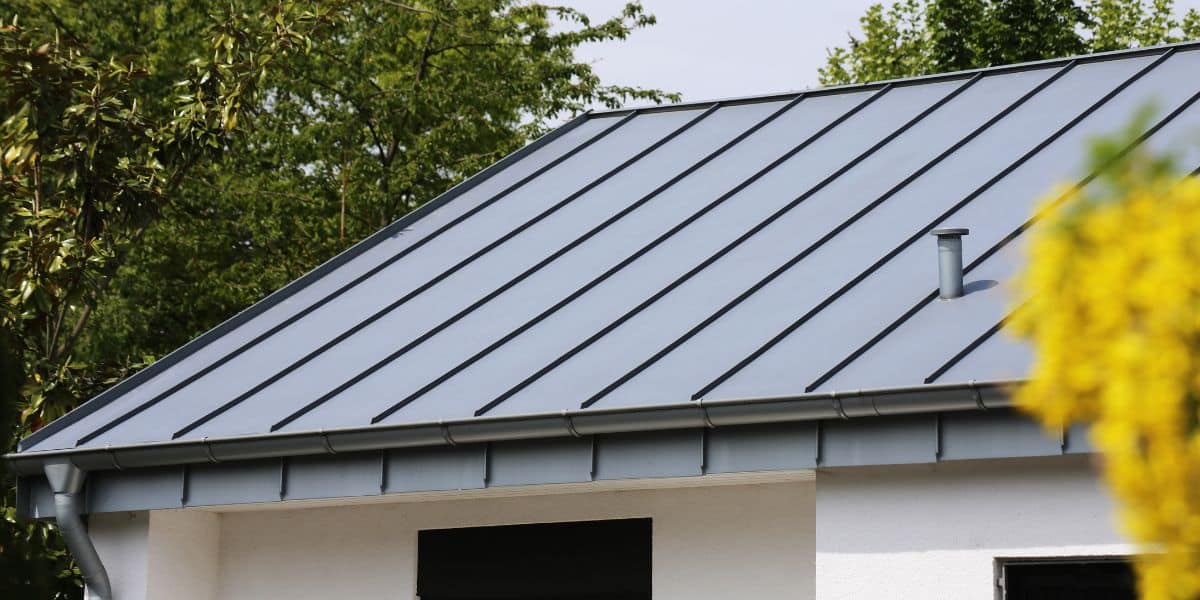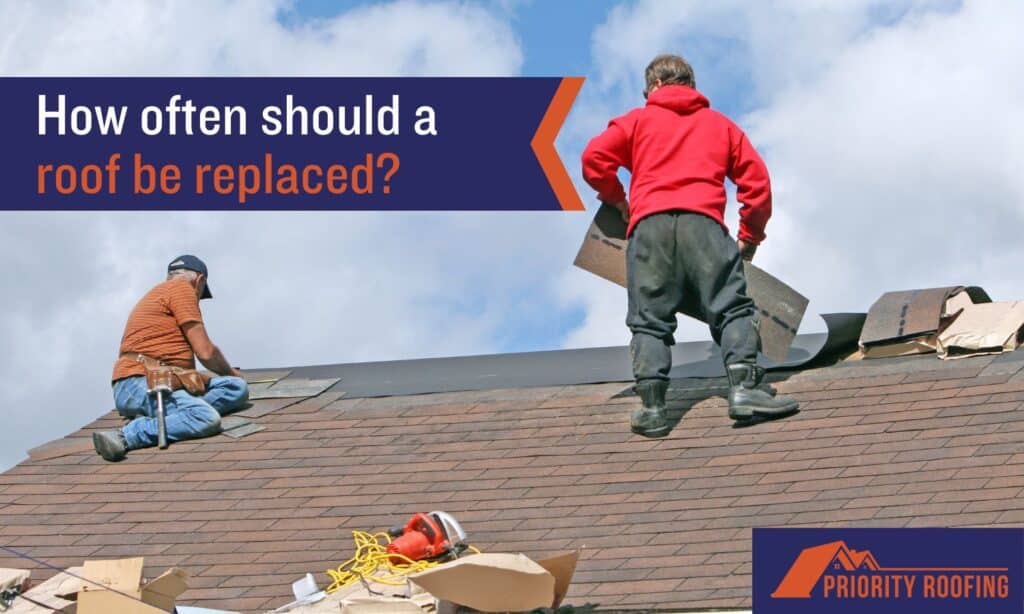Roof replacement is not a pleasant experience. Roof replacement can be stressful, costly, and time-consuming.
The less time you spend on the process, however, the better it is. Though you may still worry about how often your roof needs to be replaced. You may be even more concerned if you have had a bad experience in the past.
This article will begin by explaining when and how frequently you should replace your roofing. We’ll then tell you how long the five most common roofing materials last so you’ll know when to expect to have to replace your roof.

How often should a roof be replaced?
Roofs are not meant to be changed often. If you’ve hired a reliable roofing contractor, your roof shouldn’t need to be replaced until it is nearing the end of its life.
Your roof will last as close to its full lifespan as possible if it is installed correctly, your attic is properly ventilated, and the roof is maintained. That means you shouldn’t need a roof replacement for 20 to 50 years, depending on what kind of roofing material you have.
As an example:
Architectural asphalt shingles are the most common residential roofing material in America. If everything is installed correctly, you can start planning for a roof replacement around the 22-year mark.
In some cases, you may need a new roof sooner due to storm damage or premature roofing failure. For most homeowners, the roof will need to be replaced when it’s near the end of its lifespan.
When do roofs of different roofing materials need to be replaced?
You know that you should not replace your roof (unless there is a problem) until the end of its life expectancy. Remember that the type of roofing you use will determine how often your roof needs to be replaced.
We’ll look at the lifespans for the five most common roofing materials so you can determine how often your roof will need to be replaced.

How long does an asphalt roof last?
Asphalt shingles come in three different types: 3-tab shingles, architectural shingles, and luxury shingles. Asphalt shingles are manufactured with different lifespans depending on the type.
The 3-tab shingles are the shortest-lived of the three, with an average life expectancy of 25 years. Architectural and luxury roof shingles are both 30 year shingles, but luxury shingles can sometimes last even longer.
Asphalt shingles should last between 80 and 85% of their life expectancy. You can expect your 3-tab shingle roofing to last around 20 years and your architectural shingles around 25.
Luxury shingles, on the other hand, are thicker. They should last up to 30 years. You can extend this time frame further if the conditions are ideal and you take care of your roof.
How long does a composite (synthetic) roof last?
Composite shingles (also called synthetic shingles) are generally made from recycled materials. They are manufactured to look like real cedar or slate roofs.
A composite roof should last between 40-50 years. Composite shingles have a long life expectancy because they have a high impact rating.
Their high impact rating means they stand up to just about anything. This Includes extreme weather, such as hail.
A composite roof is also safe to walk on, unlike slate or cedar shakes. A composite roof is therefore one of the strongest roofing materials available.

How long does a standing seam metal roof last?
A standing seam metal roofing system is made up of a series of panels that are seamed mechanically.
It allows the panels to expand or contract when the metal is heated up or cooled down. Standing seam metal roofing is recommended for use in residential applications .
Standing seam metal roofs will last around 30 years and in certain conditions, up to 50 years. Its durability is due to the painted finish of the metal panels.
The metal panels of your new standing seam roof are covered by a 30-year paint warranty for the Kynar 500 finish. This is a painted finish that protects metal from the elements. And even though the paint warranty is for 30 years, that doesn’t mean the paint will disappear at that point.
How long does a slate roof last?
A slate roof, like cedar shake roofing, is made mostly of natural materials.
A slate roof will be the last roof you ever have to put on your home, as long as it is installed and flashed correctly. Slate roofs can last up to 100 years, although it’s difficult to estimate the exact lifespan due to a number of factors, such as proper maintenance.
Slate roofs are a good option if you want a material that will last and won’t require replacement in your lifetime. Of course, damage due to a severe storm may negate that advantage somewhat as the roof may need repairs.
Like cedar shake roofing, the slate material itself is not covered by a manufacturer’s warranty if it fails prematurely.

How long does a cedar shake roof last?
Cedar shake roofing is made primarily of wood materials.
If you maintain your cedar shake roofing properly and install it correctly, you should expect a 30-year lifespan. You can extend that lifespan by investing in high-quality materials and living in an area with the right climate.
Cedar shake shingles, being naturally produced, do not come with a manufacturer’s warranty. You are left only with the workmanship warranty of your roofer to protect your investment in case there is ever a problem in the future.
How long does a terracotta roof last?
Terracotta is an excellent choice for roofing no matter where the home is located. Terracotta roofs are known for being resistant to all of the things homeowners are wary of: fire, rot, insects, and more.
A terracotta roof, like other clay options, lasts 75 years on average, but can last more than 100 years if properly maintained. While terracotta roofs are inherently durable and long-lasting, the overall structure will still need maintenance.
Terracotta is a heavier material, and therefore requires underlayment material that is replaced occasionally. Roofing experts recommend that replacement should be done at least every 20 years to ensure maximum strength and stability.
The terracotta tiles are made to absorb heat during the day, which is turn helps keep the house warm at night. In warmer climates the terracotta roof can be coated to reflect the sun’s heat instead of absorbing it to help keep the home cooler.
Conclusion
You now know when the five most common roofing materials should be replaced. You should be able to tell if the time is right or near-right to replace your roof.
Now you just need to know how to choose a good roofing contractor so you can be sure the work is done right and your roof will last its full lifespan. Call Priority Roofing today for a no commitment estimate. We will answer any questions you may have and help you through the entire process.

